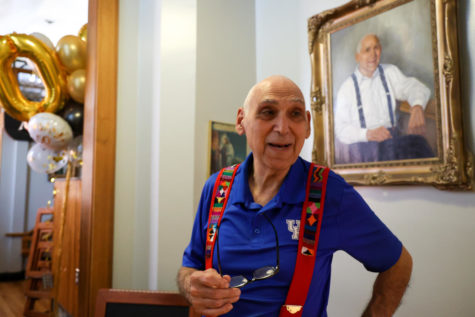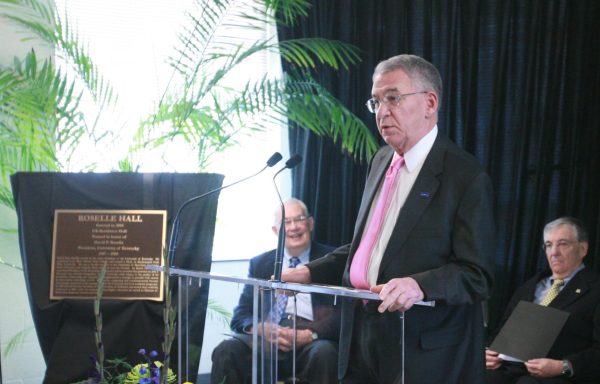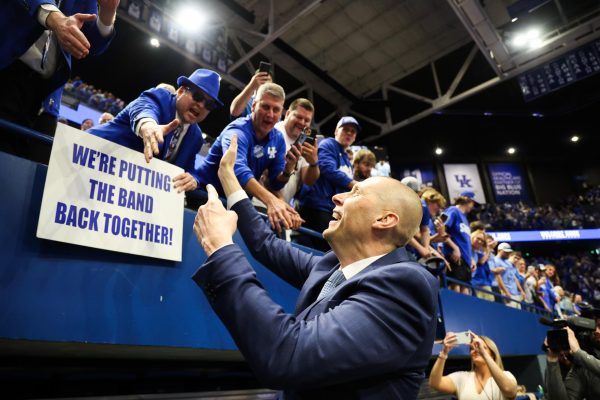Hollywood glorifies real-life dive: UK professor with ties says ‘Sanctum’ not historically accurate
March 2, 2011
When James Cameron’s “Sanctum” premiered at the box office on Feb. 4, the film hit close to home for one UK professor.
Cameron’s 3D thriller is loosely based on a 1988 Australian cave diving expedition that Stephanie Schwabe’s late husband, Rob Palmer, took part in. Palmer was one of 15 individuals trapped underground during the expedition.
Palmer, a technical diving pioneer, became known among cave divers worldwide as a man who pushed his limits, Schwabe said.
Although Palmer lived through the 1988 expedition despite the storm, he died while cave diving in the Red Sea in 1997.
“Sanctum” is based on Palmer’s 1988 dive into the Pannikin Plain Cave in Australia, one of the world’s largest cave systems.
Palmer stood at the forefront of the cave diving scene for more than 30 years. He began his career diving in his native country, England, in the late 1970s. Over the next twenty years, he frequented the blue holes of the Bahamas and published several books based on his discoveries.
Schwabe, an earth and environmental sciences professor, said that although “Sanctum” was produced and written by Palmer’s expedition leader, Andrew Wight, it is not an accurate portrayal of the events that happened in 1988.
“I personally was not involved in the making of that film,” Schwabe said. “Hollywood has taken the event and completely reworked it.”
Although Schwabe said she did not want to reveal anything about “Sanctum,” she said she is disappointed with the film’s nonsensical view of cave diving.
“It’s hard when you know what really happened,” Schwabe said. “And you look at the screen and go, ‘What?’”
One of Schwabe’s biggest concerns with “Sanctum” is that one of the characters in the movie does not warrant cave diving a risky sport.
“Here I am: I’m a person who has lost the love of my life and other friends in this process,” Schwabe said. “We’re not supposed to be in these places. I’ve thus far survived 25 years of cave diving … knock on wood. It is a big deal.”
Schwabe has not seen all of “Sanctum,” but she said several scenes in the film provided viewers with misconceptions about the actual expedition.
“I think it should have been more accurate,” Schwabe said. “First of all, I told my students when they see the opening scene, the hole is surrounded by lush forests and stuff—that was not the case at the actual site.”
Schwabe said that “Sanctum” was filmed in New Zealand rather than the Australian outback. The actual excavation site is a desert, she said.
As one of the top 40 cave divers in the world, Schwabe said she is trying to give cave diving “the respect it deserves.”
“I wish they would actually make ‘Sanctum’ real,” Schwabe said. “I think the whole story is really very good and now it’s lost.”
Derek Eggers, a UK faculty member who has 15 years of experience in media production, said Hollywood has the right to portray the story as it chooses.
“It’s not a documentary … it’s entertainment. They have the creative license to portray a true story as fiction in any way they want,” Eggers said, who also is the director of online education for the College of Arts and Sciences.
Reece Walter, an agriculture sophomore and one of Schwabe’s students, stressed the dangers of cave diving.
“The mortality rate for cave diving is about 100 percent if you keep doing it,” Walter said.
As the president of the Blue Grass Grotto, a Lexington caving club, Walter said that cave diving is more risky than caving.
“Sheck Exley, the guy who pioneered cave diving and wrote the rules about it, died trying to break a record for deepest dive,” Walter said.
While Walter noted the dangers associated with cave diving, he also said Cameron and the producers of “Sanctum” have the right to adapt the story however they want as long as they do not try to pass it off as true.
“Everything in Hollywood you see that is based on accurate events … the more dramatic they can make it, the better it’s going to sound,” Walter said.
Walter said the most important thing is that the true story of the Palmer’s expedition will live on no matter how Hollywood portrays it.
“Actual events are a lot more amazing than the movies,” Walter said. “The fact that they made it out is what’s interesting.”


























































































































































